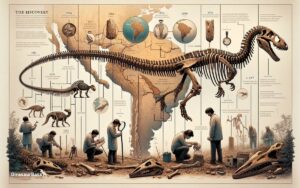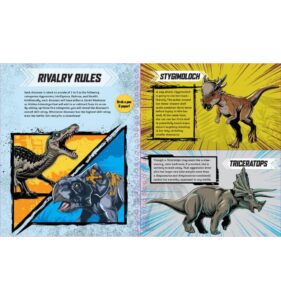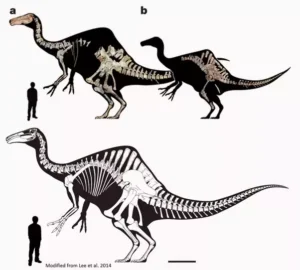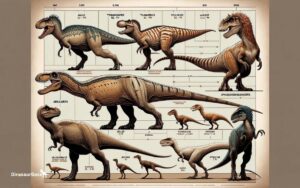3 Tips: Exploring Abelisaurus Habitat in South America
To explore Abelisaurus habitat, visit Patagonia in Argentina, analyze the Late Cretaceous rock formations, and study the regional paleontology. Focus on the Anacleto Formation known for Abelisaurid fossils.
Abelisaurus, a fierce predator from the Late Cretaceous period, once roamed the landscapes of what is now South America.
Enthusiasts and professionals alike can delve into its ancient habitat by conducting field visits and engaging in geological surveys in Patagonia.
This region, particularly the Anacleto Formation, offers a treasure trove of information. Dig into the layers of history embedded in the sedimentary rock formations to understand the environmental factors that influenced this dinosaur’s life.
A well-prepared itinerary will include visits to significant paleontological sites and museums that showcase the findings from these areas, providing insight into the flora and fauna that co-existed with the Abelisaurus.
Adhering to current research and engaging with the scientific community will enrich your expedition into unraveling the mysteries of this prehistoric giant’s domain.
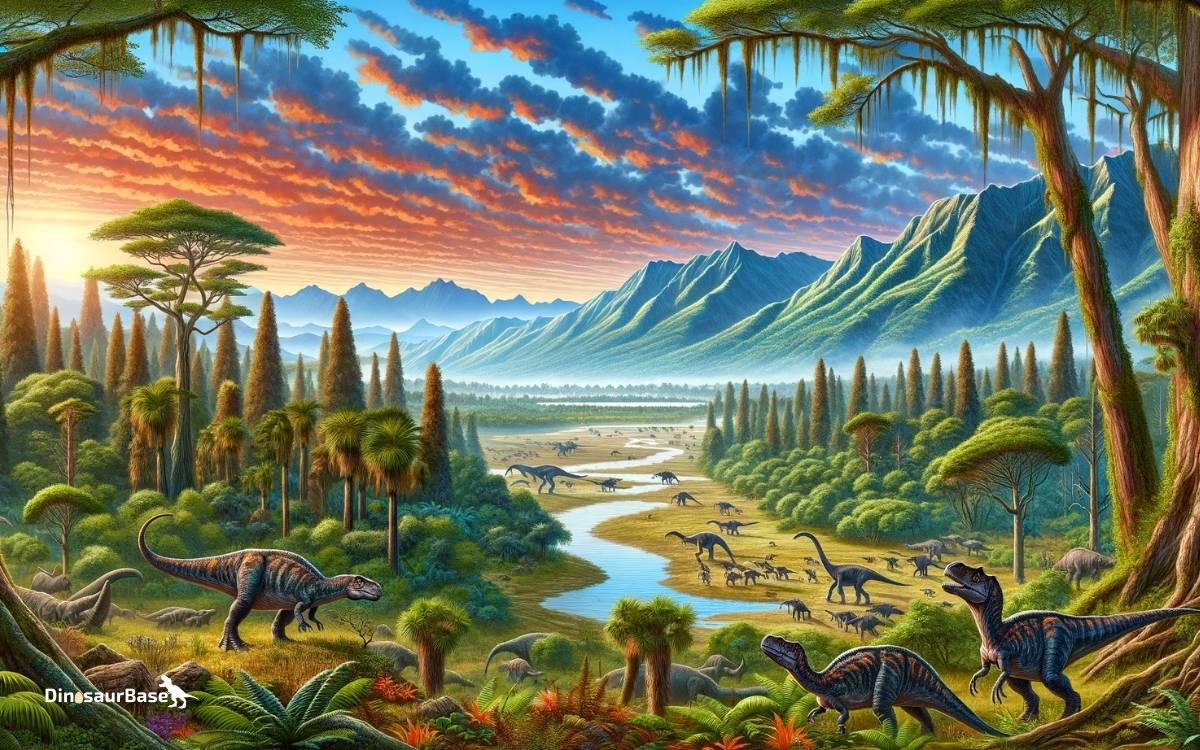
Introduction To Abelisaurus
Imagine walking in the footsteps of a dinosaur that roamed South America over 70 million years ago. That dinosaur is the Abelisaurus, a fascinating predator from the late Cretaceous period.
With its mysterious past and limited fossil records, the Abelisaurus sparks the imagination of both scientists and tourists alike. Let’s delve into the world of this prehistoric creature and discover the secrets it holds.
Brief History Of Discovery
The story of Abelisaurus began in 1985, with Argentinian paleontologists Jose Bonaparte and Fernando Novas.
They unearthed a single skull fragment in Patagonia, Argentina, the only known piece of this elusive beast.
Since then, Abelisaurus has been a source of intrigue, giving us a glimpse into the diverse world of dinosaur species that once ruled South America.
Physical Characteristics And Behavior
Despite the limited remains, the Abelisaurus is believed to have been a fierce predator.
Here’s what scientists have pieced together:
- Size: Approximately 7-9 meters long.
- Skull: Large, with sharp teeth for hunting prey.
- Limb proportions: Hind limbs suggest it was a swift runner.
Abelisaurus likely hunted smaller dinosaurs and could have been a top predator in its ecosystem. Its behavior, while largely unknown, captivates paleontologists who study predator-prey dynamics of that era.
Abelisaurus Habitats In South America
The fossil record takes us back millions of years to when dinosaurs roamed our planet. Abelisaurus, a fierce predator, once thrived in South America. Let’s explore the ancient world of this incredible dinosaur and uncover the secrets of its habitat.
Geographical Range During The Cretaceous
Abelisaurus dominated South America during the Late Cretaceous Period. Their fossils, particularly in Patagonia, Argentina, paint a vivid picture of their presence.
| Country | Geological Formation | Discoveries |
|---|---|---|
| Argentina | Anacleto Formation | Skull Fragments |
| Brazil | Bauru Basin | Possible Fossil Traces |
Climate And Environment Of The Era
The climate during the Late Cretaceous was warmer with high sea levels. Dense forests and vast floodplains made up the environment.
- Warm, humid conditions supported diverse ecosystems.
- Abundant plant life offered food for herbivores, which in turn were prey for Abelisaurus.
Tip 1: Fossil Hotspots For Abelisaurus
Discovering the ancient world of the Abelisaurus begins by knowing where to look. Putting your feet on the same ground these incredible dinosaurs once roamed is truly exhilarating. Let’s dive into the best sites to uncover Abelisaurus fossils in South America.
Key Sites in Argentina
Key Sites In Argentina
Argentina stands as the prime location for Abelisaurus fossil hunting. Notable sites have yielded exceptional finds.
Here’s a list of top spots:
- Patagonia: Renowned for rich dinosaur history.
- La Buitrera Paleo Park: Home of diverse Cretaceous fossils.
- Plaza Huincul: Witness to significant Abelisauridae discoveries.
Identifying Potential Excavation Areas
Identifying Potential Excavation Areas
Pinpointing new sites calls for a strategic approach. Observe these hints to identify potential Abelisaurus excavation hotspots:
- Examine geological maps for Cretaceous-period rock formations.
- Seek areas with known dinosaur fossil finds.
- Collaborate with local paleontologists for insights.
Tip 2: Understanding Local Regulations
Before you set out to explore the ancient lands where Abelisaurus once roamed, it’s crucial to know the rules.
These ensure the preservation of their habitat and fossils. Understanding these regulations keeps the adventure lawful and respectful to the past.
Protective Laws For Fossils
South America treasures its prehistoric remains. Countries like Argentina and Brazil have strict laws to protect them. When visiting, remember that fossils are part of the national heritage.
- Do not disturb the sites. Even small actions can damage them.
- Taking fossils without permission is against the law.
- Always follow marked paths to avoid harming untouched areas.
Engaging With Scientific Community
The scientific community plays a vital role in the study and preservation of Abelisaurus habitats. Engage with local researchers and paleontologists.
- Join organized tours led by experts.
- Attend talks and workshops to learn more.
- Support local research efforts through donations or volunteering.
Being informed and respectful ensures a meaningful experience. It allows us to appreciate these ancient creatures while safeguarding their legacy.
Tip 3: Preparing For Your Expedition
Embarking on an expedition to scour the lands once roamed by the formidable Abelisaurus demands preparation.
Preparing for Your Expedition offers insights into essential gear and safety measures. Effective preparation ensures a safe and insightful adventure into the heart of ancient predator territory.
Essential Gear And Equipment
Equipping yourself properly is crucial for a successful journey. Begin with the basics:
- Sturdy hiking boots: Protect your feet over rugged terrain.
- Weather-appropriate clothing: Layers adapt to changing climates.
- Durable backpack: Carry all essentials comfortably.
Include specialized items:
Safety Measures And Health Precautions
Staying safe is paramount. Follow these steps:
- Inform someone of your itinerary and expected return.
- Travel in groups if possible for added security.
- Carry a first aid kit for unexpected injuries.
Attend to health essentials:
- Hydration: Bring ample water and purification tools.
- Protection: Use sunscreen and insect repellent.
- Vaccinations: Up-to-date shots prevent diseases.
| Equipment | Use |
|---|---|
| Binoculars | Spot distant landmarks and wildlife. |
| GPS device | Navigate with precision. |
| Field guide | Identify flora and fauna. |
What are the best tips for exploring Abelisaurus habitat in South America?
Exploring the Abelisaurus habitat in South America requires caution and preparation. Keep in mind that the abelisaurus size and weight can vary, so stay a safe distance from these creatures. Hire a knowledgeable guide and observe from a distance to avoid disturbing their natural habitat.
Conservation Efforts And Responsible Tourism
Exploring the mysteries of the Abelisaurus, an ancient predator, draws adventurers to South America. Yet, the excitement must blend with respect for these sites.
Conservation and responsible tourism ensure future generations can marvel at these wonders too. Let’s tread lightly on our prehistoric trail and safeguard the ancient home of the Abelisaurus.
Impact Of Tourism On Paleontological Sites
Human footsteps can harm what has survived millions of years. Each site that sheds light on Abelisaurus tells a fragile story.
- Dig sites need care.
- Too many visitors can hurt.
- Foot traffic erodes land.
Working with local experts, tourists can minimize their impact. They help protect these valuable grounds for science.
Promoting Sustainable Practices
Eco-friendly habits save paleontological treasures. Tourists and guides can adopt green methods to explore.
- Use marked trails only.
- Leave fossils as found.
- Support local conservation.
Guides lead by example, showing visitors how to behave. They teach tourists to appreciate without damage.
Remember, your actions today shape the Abelisaurus legacy of tomorrow. Adventure responsibly!
Conclusion
Venturing into the ancient realm of the Abelisaurus offers an unforgettable journey. Embrace these tips and unlock the secrets of a bygone era.
Equip yourself for safety, respect the environment, and cherish the unparalleled adventure. Ready to discover dinosaur history firsthand?
South America awaits your footsteps.

